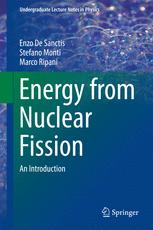

Most ebook files are in PDF format, so you can easily read them using various software such as Foxit Reader or directly on the Google Chrome browser.
Some ebook files are released by publishers in other formats such as .awz, .mobi, .epub, .fb2, etc. You may need to install specific software to read these formats on mobile/PC, such as Calibre.
Please read the tutorial at this link: https://ebookbell.com/faq
We offer FREE conversion to the popular formats you request; however, this may take some time. Therefore, right after payment, please email us, and we will try to provide the service as quickly as possible.
For some exceptional file formats or broken links (if any), please refrain from opening any disputes. Instead, email us first, and we will try to assist within a maximum of 6 hours.
EbookBell Team

4.7
96 reviewsThis book provides an overview on nuclear physics and energy production from nuclear fission. It serves as a readable and reliable source of information for anyone who wants to have a well-balanced opinion about exploitation of nuclear fission in power plants. The text is divided into two parts; the first covers the basics of nuclear forces and properties of nuclei, nuclear collisions, nuclear stability, radioactivity, and provides a detailed discussion of nuclear fission and relevant topics in its application to energy production. The second part covers the basic technical aspects of nuclear fission reactors, nuclear fuel cycle and resources, safety, safeguards, and radioactive waste management. The book also contains a discussion of the biological effects of nuclear radiation and of radiation protection, and a summary of the ten most relevant nuclear accidents. The book is suitable for undergraduates in physics, nuclear engineering and other science subjects. However, the mathematics is kept at a level that can be easily followed by wider circles of readers. The addition of solved problems, strategically placed throughout the text, and the collections of problems at the end of the chapters allow readers to appreciate the quantitative aspects of various phenomena and processes. Many illustrations and graphs effectively supplement the text and help visualising specific points.